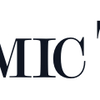Business News

The Economic Times: Breaking news, views, reviews, cricket from across India
Updated: 3 hours 3 min ago
How to start your own clothes boutique
Categories: Business News
BSE 500 Analysis: Majority of companies trade below long-term valuations
ET Intelligence Group: Despite the recent uptick, a majority of the companies in a sample of BSE 500 continues to trade below three-year and five-year average valuations, shows an analysis by ETIG. In addition, the proportion of small-cap companies trading below their long-term average valuation is higher than their mid-cap and large-cap counterparts.For a sample of 412 companies, excluding banking, financial services and insurance (BFSI), three out of every four companies have earned returns over the past month and nearly half of them trade above their year-ago levels. However, 56% and 53% of them are still available at lower price-earnings (P/E) multiples compared with the three-year and five-year average valuations. 120467764Segregating the sample companies based on their latest market capitalisation shows more stress in the small-cap category that is companies with under ₹10,000 crore market-cap. Over 64%, or two out of every three, of companies in this category now trade at lower valuations. In addition, 80%, or four out of every five, of small caps failed to generate one-year returns. While their valuations look cheaper, investors need to observe caution since during tough economic conditions small-caps often show heightened volatility and higher value erosion since they tend to rise faster and often above their fair values during good times. Large-caps with a market cap of ₹50,000 crore or higher and mid-caps with market cap between ₹10,000 crore and ₹50,000 crore in the sample show a similar trend. Over half of the companies in each category trade lower than their long-term valuations. Also, 41% of large-caps and 49% of mid-caps trade lower than their year-ago stock prices.For a sub-sample of BFSI companies from the BSE 500 list, around one-third now trade below their price-book (P/B) multiples. In case of these companies, P/B multiple provides relevant information about relative valuation.While valuations across the board may look attractive, investors need to take a sector view. For instance, over two-thirds of IT companies in the sample trade at lower valuations but the sector is grappling with short-term headwinds amid delayed project ramp-ups and slack in demand for transformational deals. On the other hand, sectors focussing largely on the domestic market such as cement, FMCG, fertilisers and utilities may not have direct exposure to the impact of global developments.
Categories: Business News
It's not your salary, but your savings that make you a millionaire, says Vijay Kedia
High salaries may look impressive on paper, but they don’t guarantee wealth. What truly matters is how much you save — not how much you earn, says veteran investor Vijay Kedia. In a recent post on X (formerly Twitter), Kedia urged individuals to rethink their lifestyle choices and focus on disciplined saving to build long-term wealth.“Your salary of lakhs doesn't make you a millionaire, your savings of lakhs makes you a millionaire,” Kedia wrote, urging individuals to rethink how they manage money and avoid consumer-driven habits.He criticised the Western philosophy of "live for today," calling it a myth born of consumerism. “There is a theory in America that live for today, tomorrow never comes. This is an abhorrent theory,” he said, pointing out how such thinking leads to financial insecurity. According to Kedia, nearly 40% of Americans don’t have even $1,000 to meet emergencies, largely because saving is not ingrained in their culture.While countries like the US offer social security as a safety net, Kedia argued that relying on governments is no substitute for personal financial planning. Instead, he advocated for building wealth through consistent investments. He offered a simple example: “If you are investing Rs 50,000 per month for 20 years in mutual funds with just a 12% CAGR, it becomes Rs 5 crore. This is simple math.”He advised young earners to reduce discretionary spending — on parties, fashion, and brands — and redirect that money into savings. “The first thing to do is reduce parties, spend less on fashion and brands, and save as much money as possible,” he said.Sharing a thought-provoking quote, Kedia added: “Either you can have a lavish young age or you can have a lavish old age. Always keep this in mind.”Kedia summed it up with a warning that every rupee spent today carries a cost in the future. “If you are spending Rs 50,000 today could mean giving up Rs 5 crore in future value."https://x.com/VijayKedia1/status/1913861402722177050?t=bUUzLLe1nR-9WcjNo4felg&s=08Also Read: Bajaj Finance, IndiGo among 10 largecap stocks where FIIs raised stake in Q4Many Gensols still hiding in the cupboardEarlier, in a separate post, Kedia also weighed in on the recent controversy involving Gensol Engineering, which has been barred by SEBI from accessing capital markets for diverting public funds. "There are many Gensols still hiding in the cupboard, just waiting to tumble out with time," he warned.Kedia hoped by the time these other companies, which he didn't mention explicitly, come out, it’s not too late by then. However, he put out 10 red flags that investors can look out that scream before a scam.Kedia said It’s wiser to be wary of companies that: 1) Talk big and overpromise 2) Maintain constant media presence — through news coverage, hyperactive social media posts, and endless interviews 3) Magnify even the smallest developments 4) Raise funds frequently without clarity on deployment. 5) Diversify into unrelated businesses just to ride trending narratives 6) Overuse flashy buzzwords to sound innovative without real substance. 7) Flaunt lavish promoter lifestyles that don’t match company performance 8) Have high levels of promoter pledging 9) Face frequent exits of key personnel (CFOs, auditors, CXOs) and 10) Engage in excessive related-party transactions.(Disclaimer: Recommendations, suggestions, views and opinions given by the experts are their own. These do not represent the views of Economic Times)
Categories: Business News
Booze busts, drug hauls surge in Delhi
Categories: Business News
China’s gold ATM sparks buzz in India
Categories: Business News

